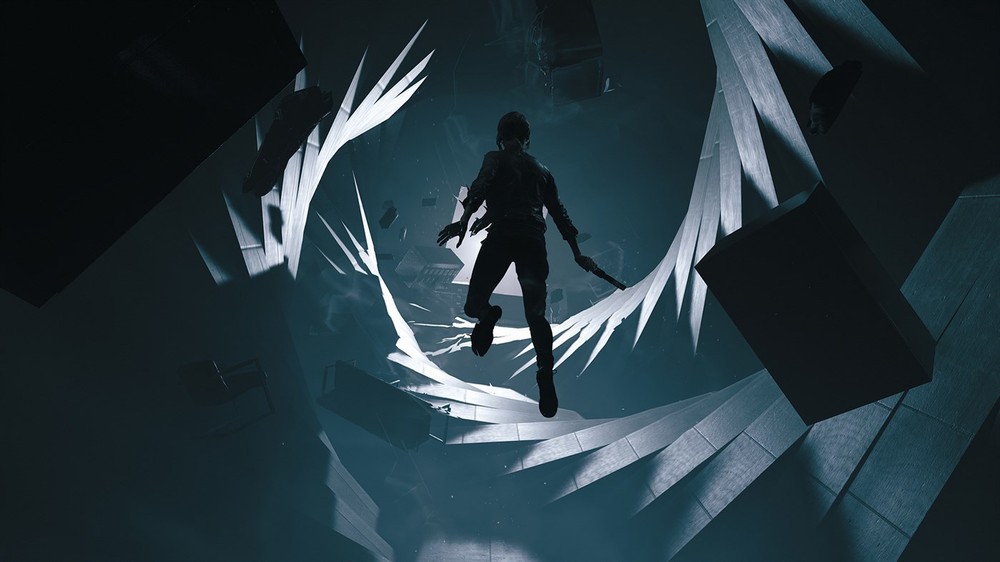Combining the flavors of Warehouse 13 and Stranger Things with a dash of X-Files and Men in Black agency bureaucracy we get Control, the latest supernatural action-adventure from Remedy, the developers who brought us Alan Wake and Quantum Break. Whether you played or enjoyed either of those previous titles is irrelevant, as Control breaks the mold when it comes to sheer originality in concept, execution, and technical prowess. This game is so advanced that it will still be relevant years from now when the graphical hardware actually catches up to what this game truly demands of your system.
To put the system requirements in context, I was playing on an i9-9900K, 16GB RAM, and an RTX2080ti video card with everything cranked to max settings, and as expected was getting 30-45fps, and that was using DLSS with an internal render of 1080p. I quickly discovered two ways to get a solid 60fps; either move several critical settings to Medium or play the game at 2560×1440 with an internal render of 1706×960. Since my Sony 4K TV does a great job of upconverting I went with the lower res and higher settings and the game performed flawless for the 38 hours I’ve been playing. Keep in mind anything lower than a RTX2080ti and you’ll definitely want to settle for 1080p. The combat in Control is frantic and best experienced at 60fps without any hiccups.
 What I appreciated the most was the utilitarian use of all this graphical power. Rather than go create flashy alien worlds or fantastical environments, all this raw ray-tracing goodness was used to create one single building, The Oldest House, home to the FBC (Federal Bureau of Control), an agency charged with investigating, researching, and containing paranormal phenomena triggered by interactions with the Astral Plane. Objects of Power can trigger Altered World Events, which can in turn spawn Altered Items, and all of these are contained within a dimensionally transcendental building located in NYC that is deceptively cavernous and increasingly complicated to navigate.
What I appreciated the most was the utilitarian use of all this graphical power. Rather than go create flashy alien worlds or fantastical environments, all this raw ray-tracing goodness was used to create one single building, The Oldest House, home to the FBC (Federal Bureau of Control), an agency charged with investigating, researching, and containing paranormal phenomena triggered by interactions with the Astral Plane. Objects of Power can trigger Altered World Events, which can in turn spawn Altered Items, and all of these are contained within a dimensionally transcendental building located in NYC that is deceptively cavernous and increasingly complicated to navigate.
Thus, my only real issue with the game was just getting around, at least until you start to unlock fast-travel control points. Of course what I consider a needless hindrance to game flow is clearly a feature design element for Remedy, and I can see that. At any given time you have one tracked mission that is highlighted on a confusing multi-layer map crushed flat. There are no waypoint arrows or guides, and you are forced to actually look at your surroundings and READ SIGNS, follow arrows, and explore the world around you. Imagine your first day at college and you are trying to find your classrooms with only a crude map of the campus. That feeling of confusion and despair was prevalent 20 hours into the game, and I was still having trouble finding the route back to areas of the building I had been to multiple times before.
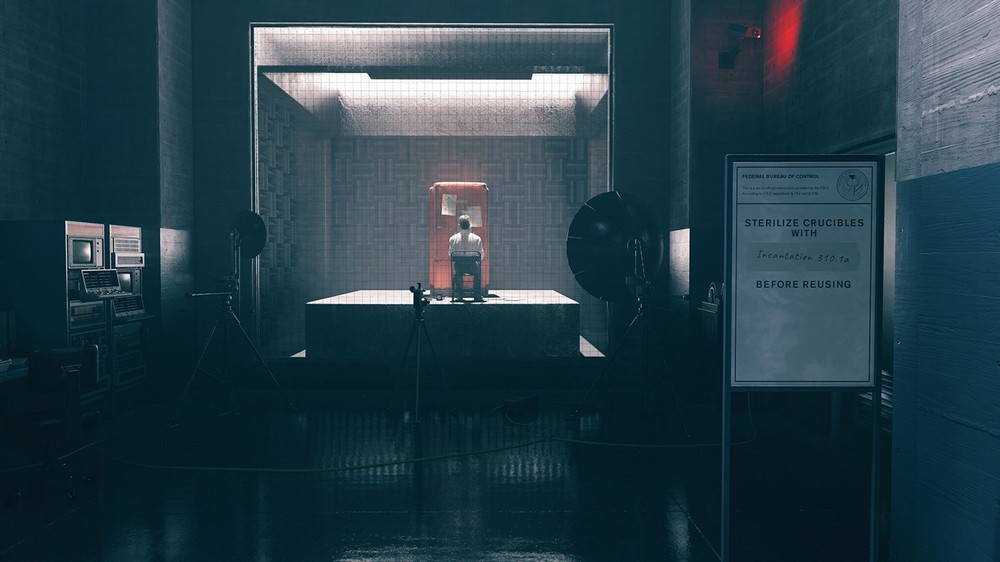 Getting lost in Control does give you plenty of chances to find all sorts of collectibles, readable notes, audio tapes, video projectors and TV’s with FMV that all provide a wealth of world building content. I’m usually pretty cavalier when it comes to readable documents in games, either giving them a quick glance or skipping entirely, but in Control I was savoring ever new document and memo, many of which were redacted to the point of being useless, but nearly every page was some small bit in this evolving narrative. There were even a couple memos references the events from Alan Wake.
Getting lost in Control does give you plenty of chances to find all sorts of collectibles, readable notes, audio tapes, video projectors and TV’s with FMV that all provide a wealth of world building content. I’m usually pretty cavalier when it comes to readable documents in games, either giving them a quick glance or skipping entirely, but in Control I was savoring ever new document and memo, many of which were redacted to the point of being useless, but nearly every page was some small bit in this evolving narrative. There were even a couple memos references the events from Alan Wake.
In addition to hundreds of readable items, there are also these stash boxes scattered everywhere that contain crafting items and mods for your weapons and personal use. And of course, you’ll also earn skill points by completing objectives, and these fuel a robust skill tree that allows you to keep your character competitive with the increasing challenge of future levels and enemies. I wasn’t able to fully unlock all the skill trees after completing the game but I came very close. You’ll definitely want to grow the trees of the skills that best suit your playstyle.
You’ll be playing as Jesse Faden who has been searching for her brother Dylan for years and has finally tracked him down to the FBC. Almost immediately upon her arrival she comes across the dead body of the FBC Director, shot in the head at his desk, and when she picks up the murder weapon events are set into motion. Jesse instantly becomes the new Director, a fact subtly communicated by the immediate swapping of every old Director portrait within the walls of the FBC to a new portrait of Jesse. But even with her new rank she is still at the mercy of her underlings, mostly Emily Pope, head of research, a few other scientists, and one creepy janitor. These staff members will not only become your mission-givers, they will occasionally grant you better security cards to gain access to deeper levels of the complex. Expect to see (and make mental notes) of doors you cannot enter but need to come back to later in the game.
 The story of the game is all over the place and just as convoluted as the concepts portrayed. Control quickly falls into a rhythm of exploration and combat, as you cleanse the FBC of the Hiss, these Astral entities that are possessing your staff and turning them against you. A few lucky employees were able to strap on devices to repel the Hiss and avoid possession, but pretty much everyone else is either out to kill you or is eerily suspended in the air waiting to be activated. There are 28 missions (that I’ve found), ten of which are lengthy main story missions and the rest side-quests, not to mention an endless supply of timed challenges that routinely pop-up. These give you just a few minutes to get to a certain location and complete the objective, and almost always pop-up just when the story is getting good. Thankfully there’s no harm in skipping them, but you do not want to pass up the side-quests. These have some of the best rewards and boss fights in the game; some better than the primary encounters. Naturally, many locations and missions are gated by key card access and even your own powers.
The story of the game is all over the place and just as convoluted as the concepts portrayed. Control quickly falls into a rhythm of exploration and combat, as you cleanse the FBC of the Hiss, these Astral entities that are possessing your staff and turning them against you. A few lucky employees were able to strap on devices to repel the Hiss and avoid possession, but pretty much everyone else is either out to kill you or is eerily suspended in the air waiting to be activated. There are 28 missions (that I’ve found), ten of which are lengthy main story missions and the rest side-quests, not to mention an endless supply of timed challenges that routinely pop-up. These give you just a few minutes to get to a certain location and complete the objective, and almost always pop-up just when the story is getting good. Thankfully there’s no harm in skipping them, but you do not want to pass up the side-quests. These have some of the best rewards and boss fights in the game; some better than the primary encounters. Naturally, many locations and missions are gated by key card access and even your own powers.
Control is all about the combat and it blends powers and weapons flawlessly. You have one gun but it can morph into several forms; a standard pistol, a shotgun, a charged rail gun, and a machine gun. I’m using conventional terms and the game will have fancy names for all those forms, but you get the idea. Weapons can be upgraded and mod slots allow you to enhance all sorts of stats from damage to fire rate, reload times and so much more. Ammo is unlimited and will slowly refill when you stop firing, which is the perfect time to bust out those super powers
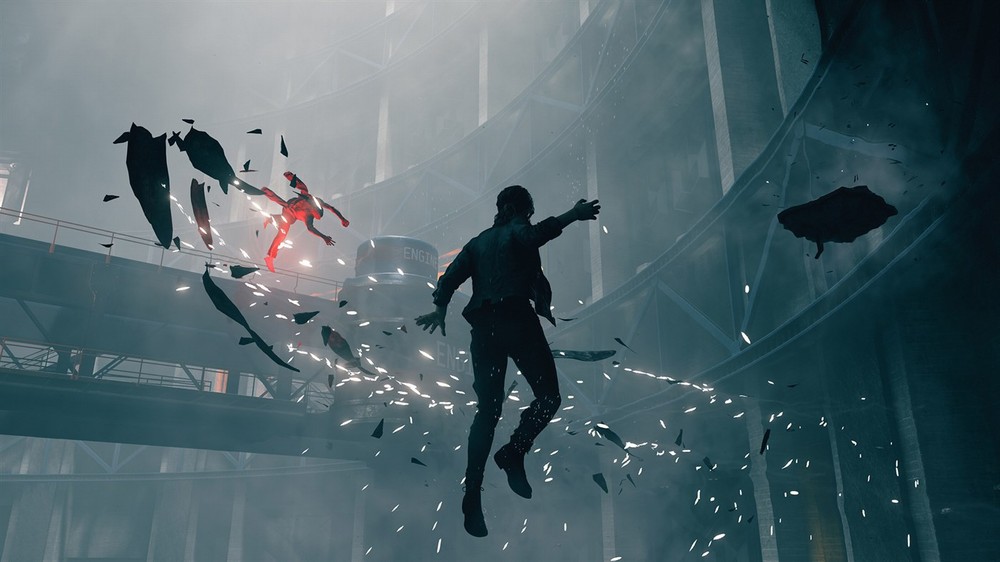 One of the first missions Jesse undertakes is tracking down an 8” floppy disc that is also an Object of Power. There are numerous OOP’s in the game and when you find them you can add their powers to your own arsenal of abilities ranging from telekinesis, levitation, shield, mind-control and more. Telekinesis is the one you’ll use the most since it allows you to supernaturally grab any item and throw it back at someone. At first you can throw boxes and small furniture but once powered up you can hurtle forklifts across the room. What’s really impressive, both from a gameplay standpoint and a graphical one is that if no object is nearby you will literally yank rubble from the walls and floors and use it as projectiles; the same for the shield ability when you rip up the floor and use the rubble as a swirling mass to block incoming attacks.
One of the first missions Jesse undertakes is tracking down an 8” floppy disc that is also an Object of Power. There are numerous OOP’s in the game and when you find them you can add their powers to your own arsenal of abilities ranging from telekinesis, levitation, shield, mind-control and more. Telekinesis is the one you’ll use the most since it allows you to supernaturally grab any item and throw it back at someone. At first you can throw boxes and small furniture but once powered up you can hurtle forklifts across the room. What’s really impressive, both from a gameplay standpoint and a graphical one is that if no object is nearby you will literally yank rubble from the walls and floors and use it as projectiles; the same for the shield ability when you rip up the floor and use the rubble as a swirling mass to block incoming attacks.
With so many combinations of weapons and powers the combat is always fresh and exciting even if the same few enemy types keep reappearing room after room. Some enemies have armor, others have shields, some fly, some have shotguns, others rocket launchers, which you can grab rockets out of midair and throw back. You can even possess weakened enemies and have them fight alongside you. The flow of the combat is so perfect that you won’t mind when previously cleared areas suddenly get repopulated with newer and stronger enemies during your inevitable backtracking. Enemy AI ranges from great to poor. Some enemies will pursue you down passages and through multiple rooms with closed doors, at least until you run far enough away from their trigger zone. Some enemies, like the flying guys, can be easily thwarted by standing in a doorway or under an overhanging ledge then slowly picking them off.
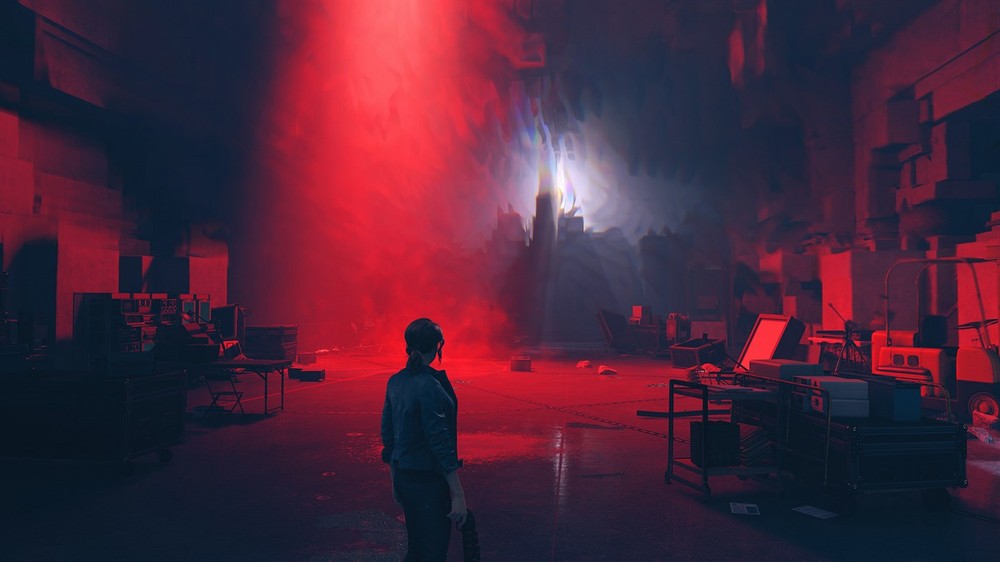 The game gets quite challenging in places but nothing that a little trial and error won’t overcome. My only issue here is with the checkpoint system that uses captured control points as spawn locations when you die, which can often require several minutes of retracing your path back to your death spot. Checkpoints are location saves only and any and all progress you’ve made up to where you died sticks with you, but there are several boss fights where you will likely die and then have to backtrack a sizable distance and perhaps even get ambushed by spawning Hiss or replay a puzzle or re-watch a cutscene – I’m looking at you Pink Flamingo! Thankfully, near the end of the game you’ll be using fast-travel a lot, which auto-saves each time you appear in a new area.
The game gets quite challenging in places but nothing that a little trial and error won’t overcome. My only issue here is with the checkpoint system that uses captured control points as spawn locations when you die, which can often require several minutes of retracing your path back to your death spot. Checkpoints are location saves only and any and all progress you’ve made up to where you died sticks with you, but there are several boss fights where you will likely die and then have to backtrack a sizable distance and perhaps even get ambushed by spawning Hiss or replay a puzzle or re-watch a cutscene – I’m looking at you Pink Flamingo! Thankfully, near the end of the game you’ll be using fast-travel a lot, which auto-saves each time you appear in a new area.
Control is one of the best looking games I’ve ever played, at least when it comes to subtle realism. It is the first game to use every trick in the RTX playbook; shadows, reflections, etc. and it’s done so sublimely that it’s easy to take for granted. Jesse is reflected in every appropriate surface from glass windows, to polished marble floors, and even shiny rocks or a glossy steel vault door. If you get close enough to a coffee machine you’ll even see her in the glass pot. Even more impressive is having her stand between a film projector and the screen and watching the film project onto her jacket. Control is an RTX showcase.
Jesse will also take several trips to the Astral Plane, which is represented with polished marble cubes pieced together to create floating platforms that lead to a distant exit portal. These are usually challenge levels used to test and train you with each new acquired power. The dark marble floors juxtaposed with the stark white backgrounds and overall ambiguous level design reminded me of the Animus levels in Assassin’s Creed.
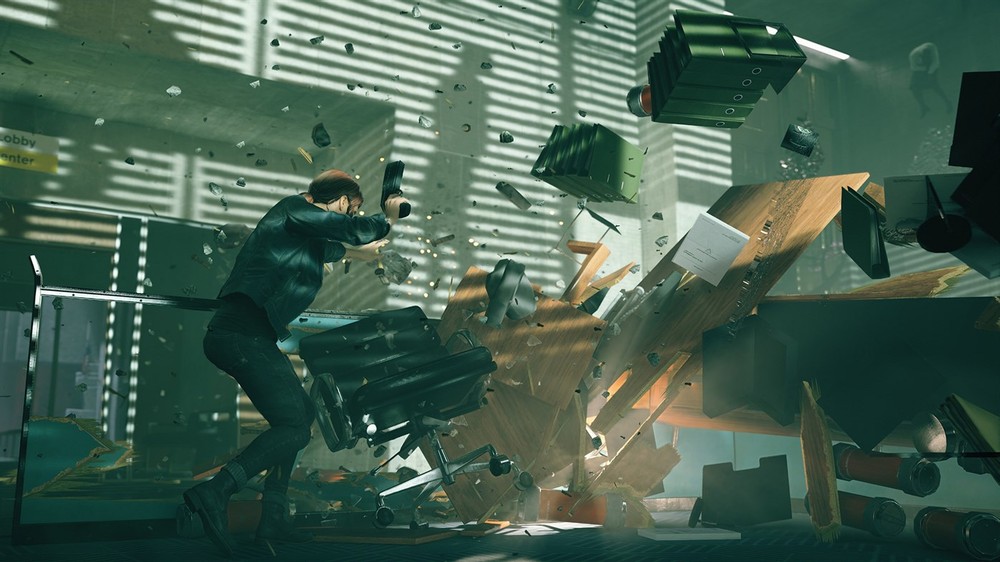 Beyond the graphics are the physics which are undeniably awesome. If you dash through an office space you’ll witness desks shatter into splinters and papers go flying everywhere. Stone columns can be torn apart with telekinetic powers or blown to bits with weapons fire in real-time destruction that turns a square pillar into a mangled corncob with bits of rebar sticking out, but even better, all of that rubble is now ammo for your TK attacks. Almost every significant object in the game is composed of smaller components that realistically break apart when damaged.
Beyond the graphics are the physics which are undeniably awesome. If you dash through an office space you’ll witness desks shatter into splinters and papers go flying everywhere. Stone columns can be torn apart with telekinetic powers or blown to bits with weapons fire in real-time destruction that turns a square pillar into a mangled corncob with bits of rebar sticking out, but even better, all of that rubble is now ammo for your TK attacks. Almost every significant object in the game is composed of smaller components that realistically break apart when damaged.
Control complements its outstanding visuals with an equally stunning sound package full of great music, powerful sound effects, and fantastic voice acting for every character in the game. Remedy loves to use FMV in their games, but it’s always in support of the story; never to tell it. I was more than willing to stop fighting and stand and watch any of the projected research reports, listen to taped interviews, or watch a creepy Threshold Kids puppet show on TV. The underlying score fits the theme of the game and manipulates your emotions and anxieties, and there is one combat sequence that takes place after you get the janitor’s Walkman that you will never forget – a solid 5+ minute heavy metal killing spree. But perhaps the most sinister sound is this chorus of disembodied chanting that you hear when entering an area controlled by the Hiss – truly terrifying in surround sound.
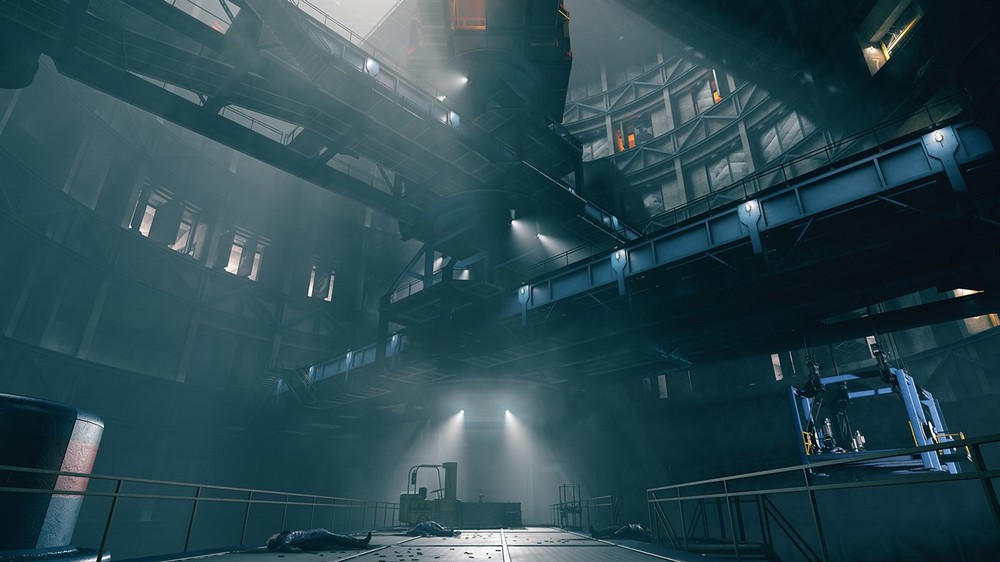 It’s hard to put a finishing time on Control because it is quite easy to complete the critical path without completing a lot of the optional content. If you mainline the primary missions you can “finish” the story in 20+ hours, but having completed the entire game and all the side-missions I can tell you there is 30-35 hours of content (more if you get lost a lot). Once the credits have rolled you are placed back in the Director’s office so Jesse can go wrap up any loose ends. Those randomly generated missions on a timer never seem to stop and there are plenty of bureau challenges like killing three enemies with melee or getting ten headshots, etc. It’s not so much a matter of running out of content, but more of when you eventually lose interest and decide to move on.
It’s hard to put a finishing time on Control because it is quite easy to complete the critical path without completing a lot of the optional content. If you mainline the primary missions you can “finish” the story in 20+ hours, but having completed the entire game and all the side-missions I can tell you there is 30-35 hours of content (more if you get lost a lot). Once the credits have rolled you are placed back in the Director’s office so Jesse can go wrap up any loose ends. Those randomly generated missions on a timer never seem to stop and there are plenty of bureau challenges like killing three enemies with melee or getting ten headshots, etc. It’s not so much a matter of running out of content, but more of when you eventually lose interest and decide to move on.
Control will appeal to gamers on a massive scale and for a variety of reasons. Tech junkies finally get to justify their $1,400 video card, action gamers get one of the best superpowers/weapons-based action games in years, explorers can get lost for hours in the labyrinth of The Oldest House collecting hundreds of intel bits and just as many mods and crafting ingredients, and those looking for a great story can ponder the elaborate world building surrounding Jesse, Dylan, Emily, and the rest of the FBC. Suspense and surprises lurk around every sinister corner, in every passage, and every room from the smallest office cubicle to a massive central complex with twin redwood trees reaching toward the ceiling or a mining cavern so large it has stars instead of a ceiling. Control is more than a game you play; it’s an experience you’ll never forget. 